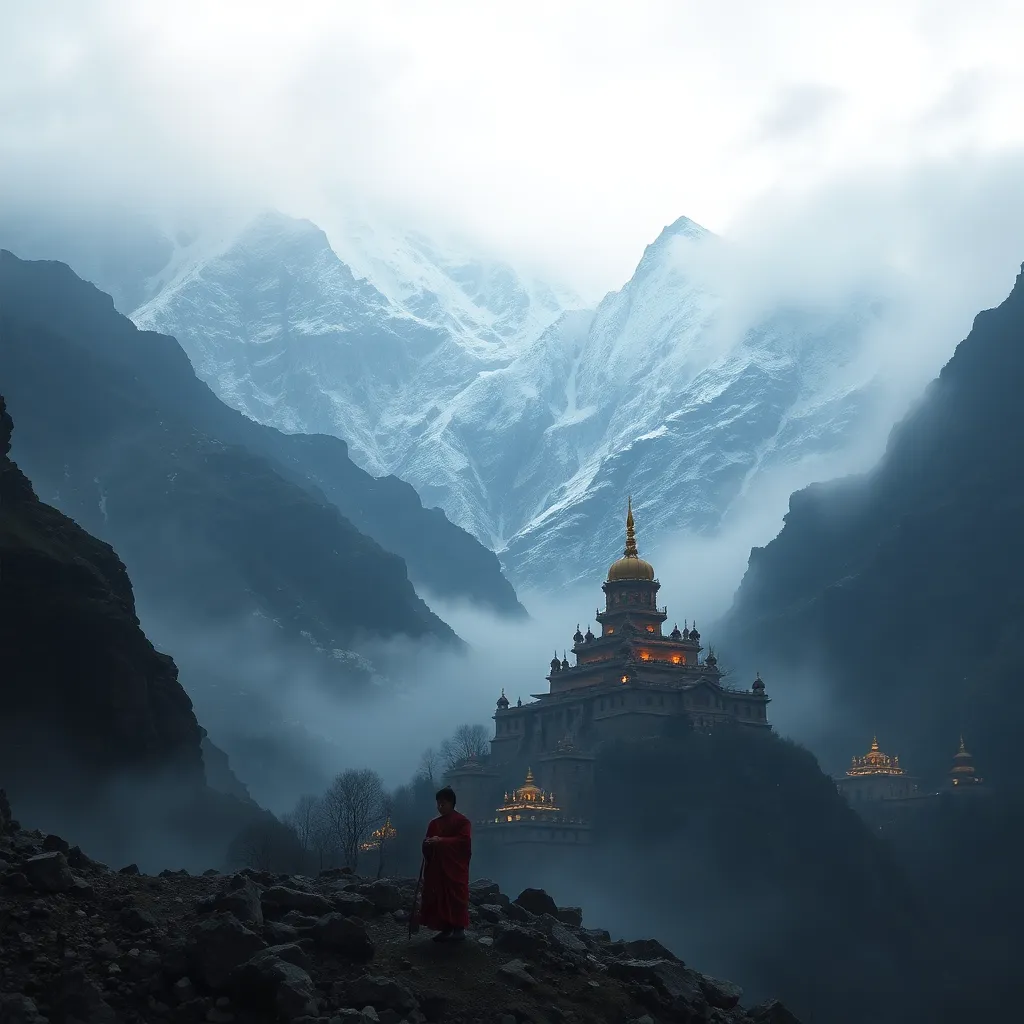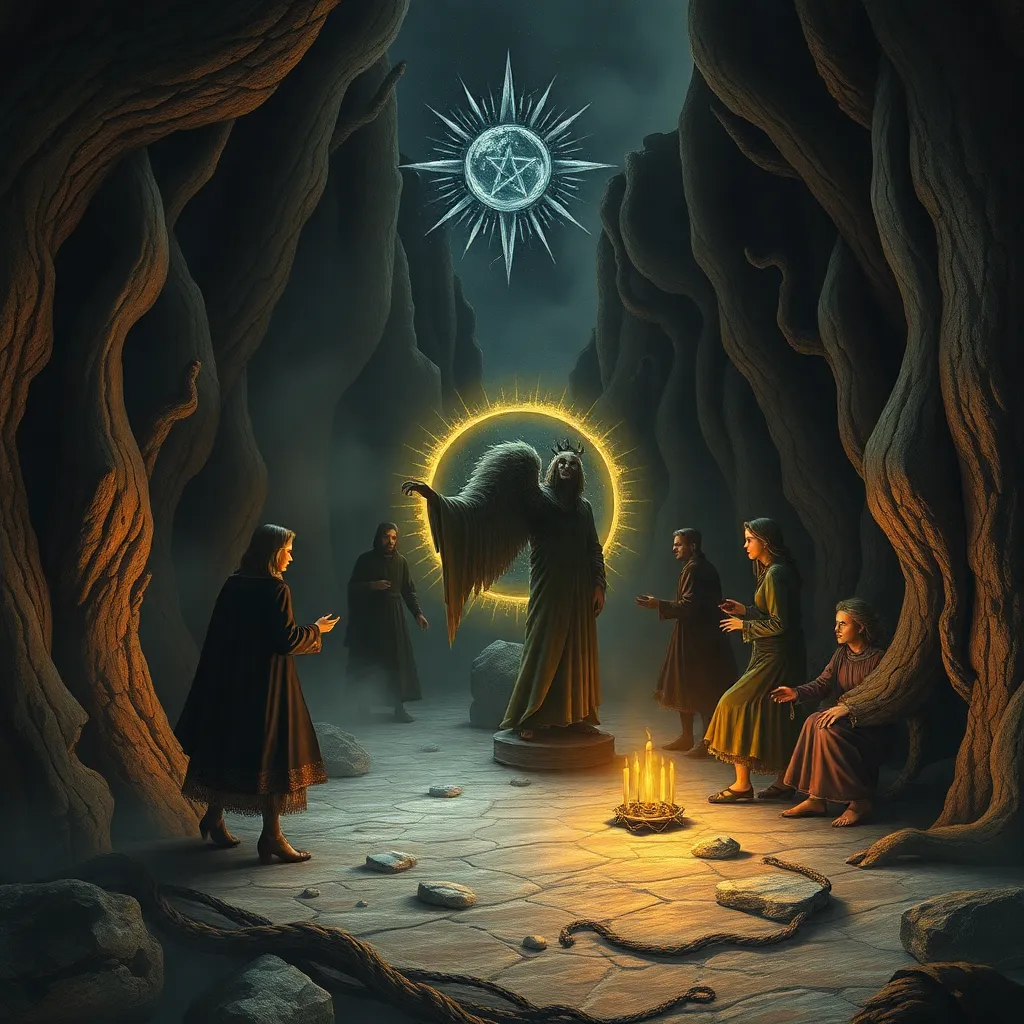The Haunted Himalayas: Ghosts and Spirits in Tibetan Buddhism
I. Introduction
The Himalayas, a majestic mountain range that stretches across five countries, have long been viewed as a mystical region steeped in spirituality and legend. The towering peaks, often shrouded in clouds, evoke a sense of wonder and reverence among those who encounter them. Within this ethereal landscape lies Tibetan Buddhism, a spiritual tradition rich in beliefs about the afterlife, spirits, and the interconnectedness of all living beings.
This article aims to explore the intersection of ghosts, spirits, and Tibetan Buddhist practices, delving into the cultural significance of the supernatural in the lives of the people who inhabit this enchanting region.
II. The Spiritual Landscape of the Himalayas
The Himalayas hold a significant place in Tibetan Buddhist cosmology, viewed as the dwelling place of deities and an important site for spiritual practice. The mountains are often seen as a bridge between the earthly realm and the divine, where practitioners seek enlightenment and connection with higher powers.
- Key themes in Tibetan spiritual beliefs regarding the afterlife:
- The concept of rebirth and samsara
- The importance of karma and ethical living
- The aspiration for liberation from the cycle of rebirth
- The role of the natural environment:
- Mountains as sacred spaces
- Rivers and lakes associated with spiritual significance
- The influence of nature on local myths and legends
III. Understanding Ghosts and Spirits in Tibetan Culture
In Tibetan Buddhism, spirits are categorized into various types, each with unique characteristics and roles within the spiritual ecosystem. Understanding these classifications helps in recognizing how the Tibetan people relate to the supernatural.
- Definitions and classifications of spirits:
- Benign spirits, such as protective deities
- Malevolent spirits, often associated with illness or misfortune
- Ancestor spirits, revered and honored in familial rituals
- Cultural perceptions of ghosts:
- Fear of malevolent forces
- Reverence for benevolent spirits
- Understanding spirits as part of the natural order
IV. Legends and Folklore of the Haunted Himalayas
The Himalayas are rich in ghost stories and legends, passed down through generations, often shared in the form of oral tradition. These tales not only entertain but also serve to teach moral lessons and preserve cultural identity.
- Famous ghost stories and legends:
- The tale of the Yeti, a mysterious creature said to inhabit the higher altitudes
- Local legends of mountain spirits that protect travelers
- Stories of lost souls wandering through the valleys
- The role of oral tradition:
- Preservation of cultural narratives
- Transmission of spiritual beliefs and practices
- Connection between generations through storytelling
- Specific locations known for haunting narratives:
- Mount Kailash, revered as a sacred site
- The valley of Yarlung Tsangpo, associated with ghostly phenomena
- Local temples and monasteries that have their own ghost stories
V. Rituals and Practices for Dealing with Spirits
Tibetan Buddhist rituals play a crucial role in addressing the presence of spirits and maintaining harmony within the community. These practices reflect the deep-seated belief in the interconnectedness of all beings.
- Tibetan Buddhist rituals for appeasing spirits:
- Chöd practices, which involve offering oneself to feed spirits
- Rituals of purification and blessing
- Community ceremonies to honor ancestors
- The significance of prayer flags and offerings:
- Prayer flags as a means to spread blessings and good fortune
- Offerings of food, incense, and symbolic items to appease spirits
- Creating a sacred space for spiritual activities
- The role of lamas and spiritual leaders:
- Guiding the community in spiritual practices
- Performing rituals to ensure the well-being of individuals and families
- Providing counsel on dealing with supernatural phenomena
VI. The Influence of Ghosts on Tibetan Art and Literature
The representation of ghosts and spirits in Tibetan art and literature is profound and multifaceted, reflecting the cultural and spiritual life of the Tibetan people.
- Representation in Tibetan thangka paintings:
- Ghosts depicted in scenes of enlightenment and liberation
- Symbolic representations of the dual nature of existence
- Integration of local lore into traditional art forms
- Literary works exploring the supernatural:
- Poetry that reflects on the nature of life and death
- Folktales that emphasize moral lessons through ghostly encounters
- Modern literature that engages with traditional beliefs
- Impact on modern Tibetan culture:
- Revival of interest in traditional beliefs
- Influence on contemporary art and performance
- Incorporation of supernatural themes in popular culture
VII. Contemporary Perspectives on Ghosts in Tibetan Buddhism
As globalization and modernization sweep across the globe, traditional beliefs in Tibetan Buddhism are facing new challenges and adaptations. The perceptions of ghosts and spirits are evolving, particularly in light of increasing tourism and cultural exchange.
- Globalization and modernization:
- Changing attitudes towards spirituality among younger generations
- Blending of traditional beliefs with modern practices
- Impact of urbanization on rural spiritual life
- The role of tourism:
- Increased interest in haunted sites and spiritual tourism
- Commercialization of ghost stories and folklore
- Conservation of cultural heritage through tourism
- Personal accounts of the supernatural:
- Modern-day experiences with ghosts and spirits
- Shared stories that bridge traditional and contemporary beliefs
- Documentation of personal encounters in the age of technology
VIII. Conclusion
The significance of ghosts and spirits in Tibetan Buddhism is deeply intertwined with the cultural, spiritual, and historical fabric of the region. From ancient legends to contemporary practices, the supernatural remains an integral aspect of life in the Himalayas.
As we reflect on the enduring mystique of these mountains, it becomes clear that the beliefs surrounding ghosts and spirits not only shape individual identities but also foster a sense of community and continuity among the Tibetan people.
In conclusion, the integration of spiritual beliefs and cultural identity in the Himalayas continues to thrive, offering a rich tapestry of experiences that connect the past with the present and the earthly with the divine.



